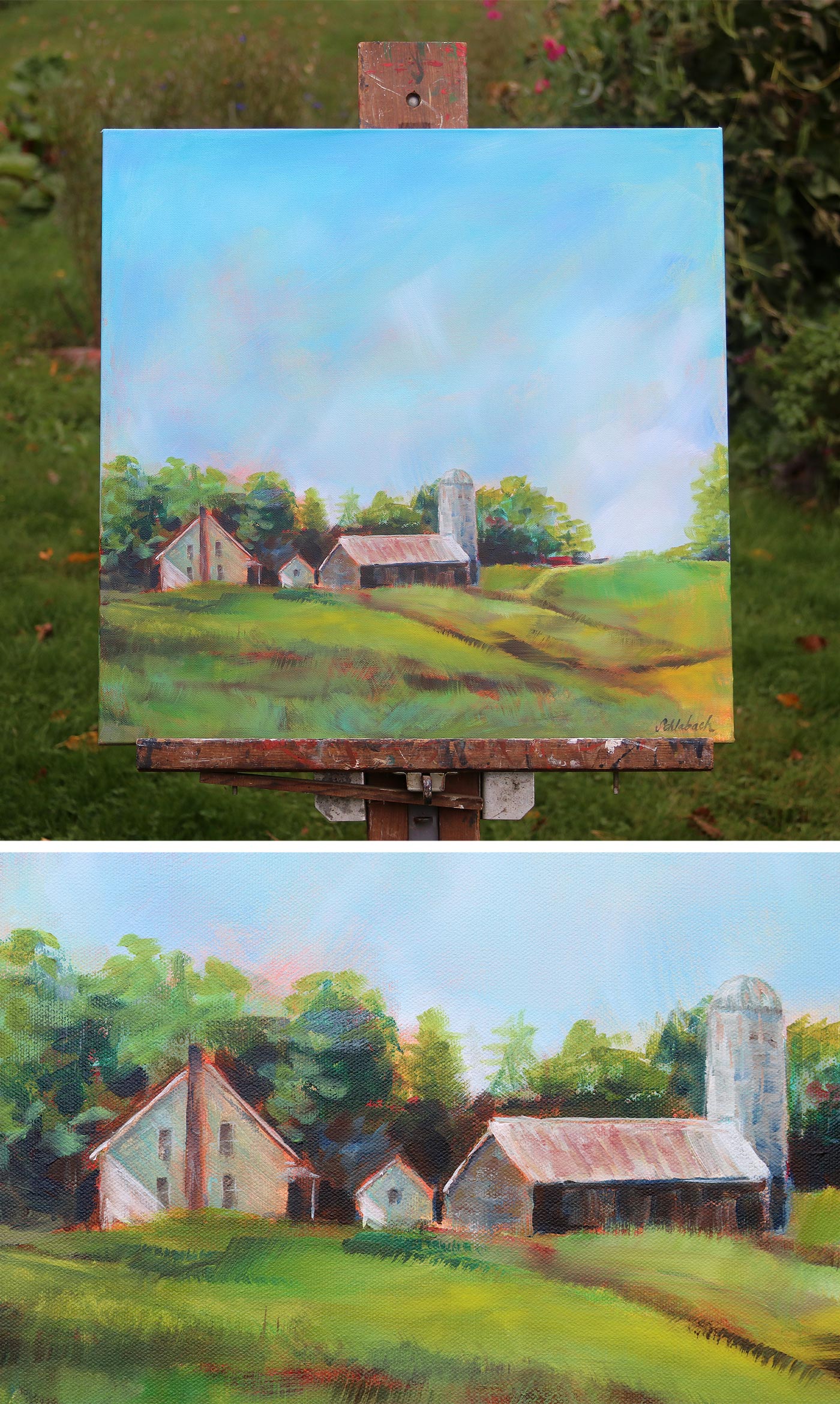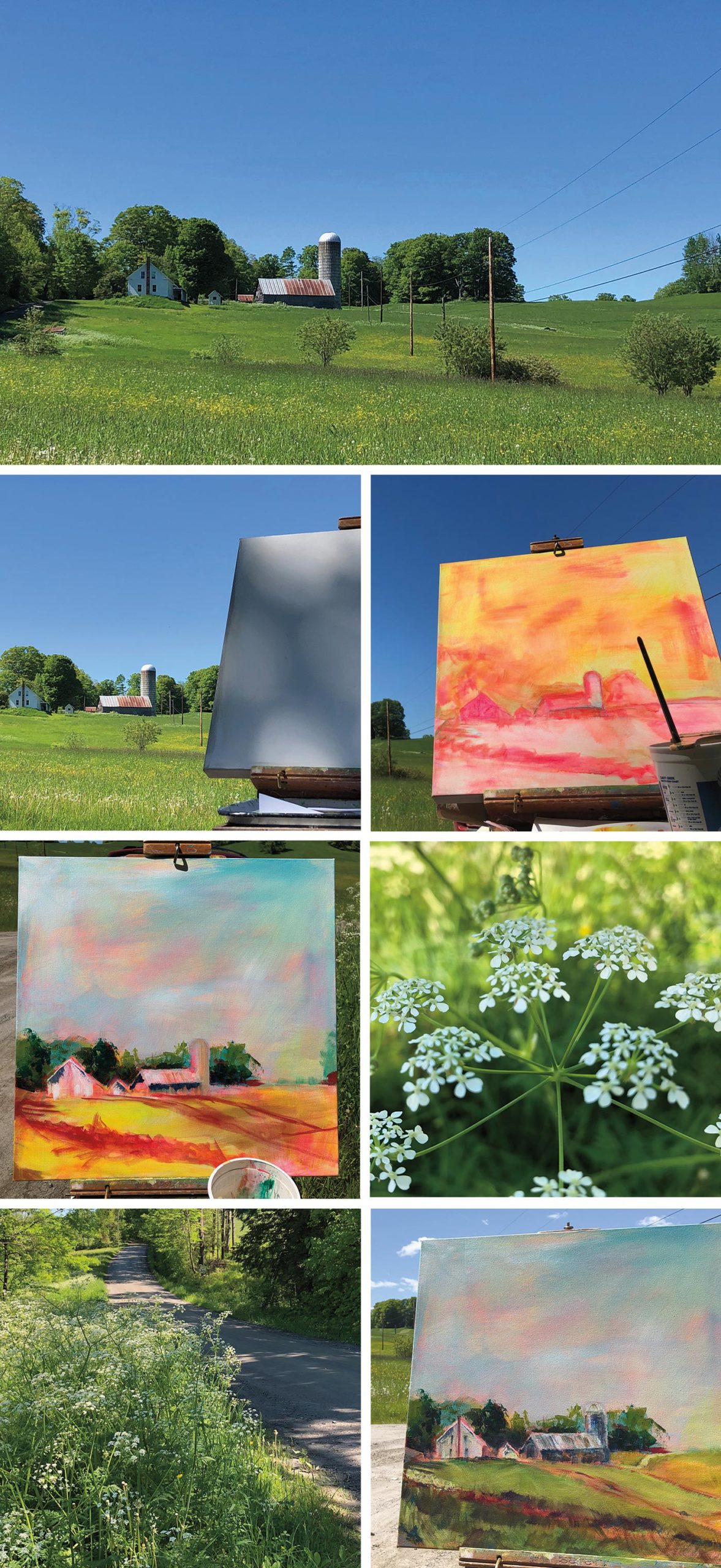Memory flashback: June 7.
I set up my easel at the corner on Belknap Brook Rd and Dairy Hill in Tunbridge, Vermont. Morning breeze keeps the black flies in check (sort of) and the farmhouse just up the meadow from me is lit in filtered sun. Chervil is blooming along the verges, a hated invasive but so pretty in this June light that I choose not to hate it for a day. Just one day.
Using big flat brushes, I block in my composition—a surreal depiction of hot pink underpainting, yellows, umbers and red. Vermont on acid.
This is when a cyclist pulled up and asks if it is ok to look.
Okayyyyyyy…sure, why not.
This is Livian, who describes the house where he lives—a remodeled schoolhouse I know and admire. Now he offers an invitation to stop in any time. And stories about his aging father and brothers coming up to visit. I keep painting to prove that I’m not high on something, and things are looking up (on my canvas) by the time he pedals on, anticipating his long down hill run homeward.
The sun has fully lit the hill by now. Shadows are shortening and colors flattening—as they do when the sun is strong. I hold tight to my memory of the early shadows and colors, layering in, mixing. Where I was in shade when I started, I am now in the full sun.
This is when I hear the tractor coming up the hill. The driver waves and comes to a stop. He introduces himself as John, and jumps down to ask permission to look.
Yes, sure! (This is fun.)
I’m painting his ancestral farm—lived in by an aunt and uncle in his childhood—but sold out of his family now.
He’s on his way to cut the fields, which he continues to work. We talk about the wet fields, the battle to contain the aforementioned invasive wild chervil, the price of milk (low), but the joy of farming these family acres (tremendous). And as we chat we wave to various passers-by, even the woman who has to maneuver around John’s idling tractor and looks a little put out.
John asks if I’ll show my painting to his elderly aunt, the former resident of the farm I’m painting, and he tells me where she lives. I agree.
Soon John and his tractor cut across my view, defining a new color swath to paint into place. The tree line behind the house takes shape, and I add more colors to the sky. First colors that don’t belong there, and then overlaying colors that do. Somehow this works, but I’m still surprised when it does.
When the sun is too hot and the black flies too fierce, I pack up and drive a half-mile up the road to visit John’s Aunt Millie at her tidy little house. Her delight is genuine, but she’s hosting six friends for lunch and I don’t want to impose. The roast chicken and vegetables smell good. This doesn’t stop her from telling a few stories of a painter who came and stayed at the farm a long time ago. She and her guests admire my painting—still unfinished, but representative of a hill and a place they all know and love. I bid farewell with promises to return.
Two weeks ago, I found that unfinished painting in my studio, and took the time to complete it. A few hours and more attention to color and detail remind me that I need to do this:
- paint outside,
- interact with a place,
- but then revisit the canvas in the studio,
- rethinking what I can’t when the sun is in my eyes, when there are neighbors to talk to, when the wild chervil is blowing in the breeze.
~~~~~

I’ve entered the piece in the Local Color show at Artistree in Pomfret.


